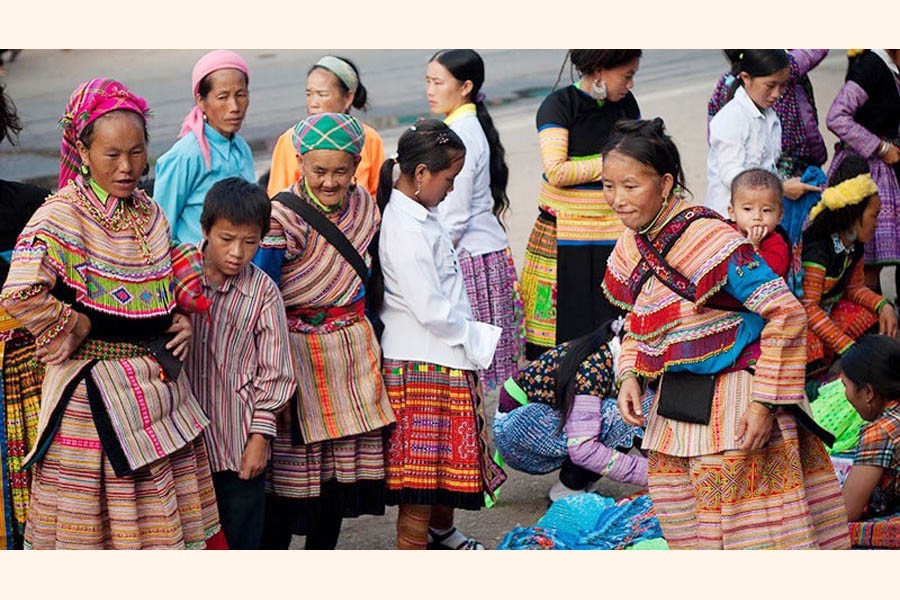The school students in the country were jubilant, like in every year, over the occasion of receiving new textbooks on January 1. In a weird turn of reality many of them felt perplexed. Although they live within the greater Bengalee communities, they stand out with their own tradition and culture. Of all things, they speak different languages. But due to the unavailability of books written in their own scripts, they have to enrol in the local Bangla-medium schools. Few have ever seen books printed in their long-extinct mother tongues. This year, the government undertook a laudable initiative aimed at indigenous students: printing books in their own languages. In accordance with the government-sponsored plan, the major indigenous groups living in both the Chittagong Hill Tracts (CHT) and the plainland have been made part of the jubilation.
Targeting the free book distribution on January 1, the textbook authorities this year printed books and reading materials in accordance with the national school syllabus. As expected, the primary and secondary-level indigenous students became impatient to go to school with their books after receiving them. But what had awaited them at school was disappointment. Almost all the indigenous students had books in their respected languages. The sad part was there were no teachers to conduct classes by using these books. The books were of no use to the students. They futilely leafed through the books and watched the drawings accompanying the lessons. They had only one option open, managing books written in Bangla. The textbook board authorities had spent a huge amount of money for printing the books for indigenous children.
The stark reality is although a total of 37 languages are spoken by over 50 indigenous large and small communities, many are on the verge of extinction. As CHT is home to the largest number of these ethnic groups, myriad languages are also spoken here. Dominant of them are Chakma, Marma and Tripura. These and some other groups claim to have script-based languages of their own. Owing to not being in use in written form for long, many ancient languages have disappeared. In the cases of Chakma, Marma and Tripura, vigorous efforts had to be put in to revive their extinct written form. Everybody knows that printing textbooks is not all. Teaching child students is a prime requisite for a dying language to get back its earlier splendour. This is a phenomenon which applies to the CHT's once-chief languages. It is difficult to believe that the mainlander Bengalee teachers can accomplish the job after learning the indigenous tongues. Given the mission's sensitive nature, none other than the born CHT people acquainted with the area's culture and the linguistic histories fit in with the job. Moreover, the teachers ought to be fluent in the national language.
An almost similar spectacle is found in the mainland indigenous areas. A few of the native languages spoken here have been in use for a thousand years. These languages include Santali, Oraon, Garo, Hajong, Munda, a branch of Monipuri and several others. On the occasion of the New Year's textbook festival this year, several books in the non-CHT languages have also been published. And the child and teenage-level students in the south-western and northern Bangladesh face the same difficulty as it has been found in the Chittagong hill districts. The joy of the school students would have increased manifold had their books, written in indigenous languages, been taught in class like those in Bangla. The textbook and school curricular authorities hope to assign the indigenous language teachers the task of preparing textbooks meant for the ethnic minority school students. The students and their parents hope the dream does not end in yet another phase of disillusionment. It would be a fitting tribute to the coming International Mother Language Day.


